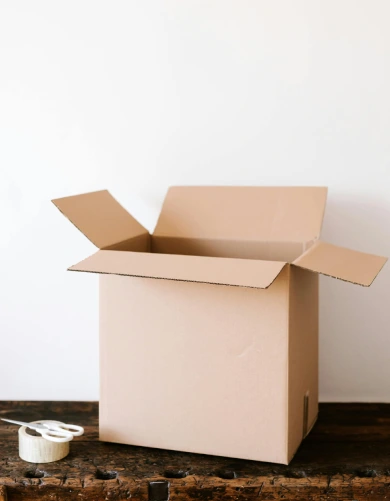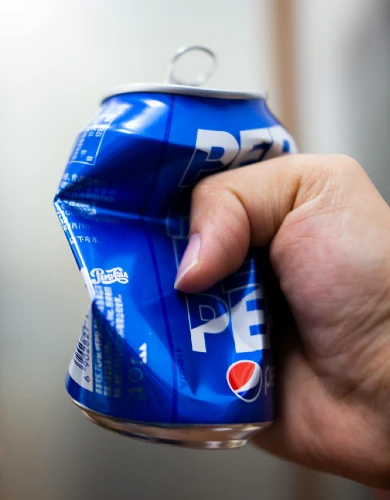Sellafield: Britain’s hidden nuclear waste hub
Nestled beside the Lake District National Park on the Cumbrian coast is Sellafield, Europe’s largest nuclear waste decommissioning and storage site.
Sellafield stores around 85% of the UK’s legacy nuclear waste in its ageing facilities. The UK government spends £2.5 billion each year on managing the nuclear waste at Sellafield.
Our experts explain the history and purpose of Sellafield, the UK’s most expensive commercial waste disposal facility. Here’s what we cover:
- What is Sellafield?
- The history of the Sellafield nuclear facility
- Sellafield’s current operations
- Sellafield facilities and infrastructure
- Nuclear waste reprocessing at Sellafield
What is Sellafield?
Sellafield (formerly known as Windscale) is a large multi-function nuclear site on the coast of Cumbria, England. The site covers an area of 265 hectares and comprises more than 200 nuclear facilities and more than 1,000 buildings. In other words, it’s huge.
Europe’s largest nuclear site has the most diverse range of nuclear facilities worldwide, most of which are being decommissioned. Amongst them are:
- The historical Windscale Piles reactors
- Calder Hall nuclear power station
- The MAGNOX and THORP nuclear waste re-processing sites
- The UK’s National Nuclear Laboratory HQ
The Nuclear Decommissioning Authority (NDA) owns and manages the site through its wholly-owned subsidiary, Sellafield Ltd., which handles all the decommissioning activities.
The history of the Sellafield nuclear facility
Here is a summary of the nuclear activities that have taken place at Sellafield since its post-WW2 inception:
| Era/Period | Event/Development | Details |
|---|---|---|
| 1947-1950s | Establishment of Sellafield | Originally part of the British nuclear weapons program; site construction began in 1947. The Windscale Piles, two nuclear reactors, were established as part of the program. |
| 1956 | Calder Hall Reactor Operation | World’s first commercial nuclear power station began operation, adjacent to the Windscale Piles. It generated electricity and produced plutonium for weapons. |
| 1957 | Windscale Fire | Major accident in one of the reactors, resulting in significant radioactive release. |
| 1960s-1980s | Expansion of Nuclear Operations | Commissioning of Magnox nuclear waste reprocessing plant in 1964. Marks end of focus on nuclear weapon research, instead focusing on the UK's growing amount of nuclear waste from its nuclear power reactors |
| 1990s | Introduction of Vitrification | High-level waste vitrification process started to immobilise radioactive waste in glass. |
| 1994 | THORP (Thermal Oxide Reprocessing Plant) Operational | Began reprocessing spent nuclear fuel from both UK and international reactors using THORP. Several nuclear leaks during this time. |
| 2003 | Closure of Calder Hall | End of operations for the world’s first commercial nuclear power station. |
| 2005 | Establishment of Sellafield Ltd | New company created to manage and decommission the Sellafield site under the Nuclear Decommissioning Authority. |
| 2010s | Focus on Decommissioning | Increased efforts in decommissioning old facilities, including removal and treatment of legacy wastes. |
| 2018 | THORP Closure | The THORP reprocessing plant ceased operations, marking the end of large-scale reprocessing at Sellafield |
| 2020s | Advanced Waste Management Technologies | Implementation of advanced technologies such as robotics and remote handling for waste retrieval. |
| 2022 | Magnox Reprocessing Ends | Completion of Magnox reprocessing operations, shifting focus to decommissioning and waste management. |
| Ongoing | Decommissioning and Environmental Remediation | Ongoing efforts to decommission legacy facilities and remediate the site for future use. |
The key things to highlight are the irresponsible experiments of the 1940s-50s, the shift away from nuclear weapons and into nuclear waste reprocessing in the 1980s, and finally, the closure of Calder Hall in 2003 and the end of nuclear reprocessing in the 2020s.
Sellafield’s current operations
Sellafield’s activities have shifted dramatically over the past twenty years, from operating nuclear power plants and reprocessing waste to managing the million tonnes of radioactive legacy nuclear waste.
In this section, we’ll summarise Sellafield’s current decommissioning and nuclear waste management activities.
Nuclear decommissioning at Sellafield
Sellafield hosts one of the world’s largest and most complex nuclear site decommissioning projects.
This involves safely dismantling legacy nuclear facilities, such as old reactors and supporting structures. These are all contaminated with radioactive material and wastes that need careful management.
It’s a very specialised job that must completely avoid the release of significant radioactivity to the surrounding area, so it is extremely resource-intensive and time-consuming. Some structures, like Calder Hall, will take hundreds of years to safely decommission.
Here’s a summary of the decommissioning projects currently taking place at Sellafield:
| Project | Key Activities | Timeline |
|---|---|---|
| Fuel Storage Pond | Remove sludge and prepare for draining | Ongoing |
| Fuel Cladding Silo | Start waste removal | Began August 2023 |
| Magnox Storage Pond | Remove fuel and sludge | Ongoing |
| Swarf Storage Silo | Start removing waste | Started June 2022, ongoing for 20 years |
| Pile No.1 Chimney | Continue demolition | Ongoing |
| Calder Hall | Remove fuel and buildings, maintain site | Until 2032, final demolition by 2114 |
Decommissioning results in millions of tonnes of radioactive waste of different grades, most of which are managed on-site at Sellafield or at the nearby Drigg site, which handles low-level radioactive waste.
Nuclear waste management at Sellafield
Sellafield holds around 85% of the UK’s nuclear waste, estimated at least 4.9M tonnes. This corresponds to about 4.5 million cubic meters, which is “enough to fill Wembley Stadium four times over.”
Interestingly, most of this waste was generated from the initial nuclear research from the 1940s to about the 1980s, including the decommissioning of operational sites during this time of hurried nuclear research. For context, this was the Cold War where accelerating nuclear research was seen as a matter of survival.
Types of nuclear waste at Sellafield
All nuclear waste, including that at Sellafield, is categorised according to its levels of radioactivity and its state, either liquid or solid. Each is processed, packaged, and stored differently to ensure it can be managed safely and efficiently:
| Waste Type | Description |
|---|---|
| Low-level waste (LLW) | Typically compacted, placed in large metal containers, and placed inside concrete-lined vaults. |
| Intermediate-level waste (ILC) | Stored in 500L stainless steel drums and encapsulated in a cement-based structure before being stored in the vaults. |
| High-level radioactive fluids (HLW) | Vitrified into glass and poured into stainless steel canisters that are welded to ensure there are no spills. |
At Sellafield, these wastes exist in different proportions:
| Radioactive waste type | Proportion | Amount |
|---|---|---|
| Low-level waste (LLW) | 94% | 4.2M cubic meters |
| Intermediate-level waste (ILW) | 6% | 290k cubic meters |
| High-level waste (HLW) | 0.1% | 1,100 cubic meters |
Source: UK Radioactive Waste Inventory 2022
Here is how different sites manage and temporarily store radioactive waste:
| Storage Site | Type of Waste | Amount |
|---|---|---|
| Magnox Swarf Storage Silo | Waste from Magnox reactor fuel cladding | 1,000s of cubic meters |
| Magnox Storage Pond | Spent fuel and sludge from Magnox reactors | 100s of tonnes |
| Fuel Storage Pond | Fuel and sludge from early reactors | Large quantities |
| Fuel Cladding Silo | Cladding from Windscale Piles | 1,000s of cubic meters |
| Vitrification Plant | High-level waste in glass form | 1,000s of canisters |
| Spent Fuel Ponds | Spent nuclear fuel | 1,000s of tonnes |
| Encapsulation Plants | Solidified intermediate and high-level waste | 100s of tonnes |
| Low-Level Waste Repository | Low-level waste like contaminated materials | 100,000s of cubic meters |
| Dry Storage Facilities | Spent nuclear fuel in dry casks | 1,000s of tonnes |
The main reason so much radioactive waste is stored at Sellafield is that the UK does not have a long-term facility for storing highly radioactive waste. A Geological Disposal Facility (GDF) to provide a permanent solution remains in the planning stage.
Research and development
One advantage of having this scale and complexity of decommissioning as one of Western Europe’s most radioactive sites is that Sellafield now excels as a centre for innovation in nuclear site decommissioning and waste management technologies.
The site is a hub for developing and testing new techniques and approaches for handling radioactive waste, decontamination techniques, vitrification technologies and environmental monitoring:
- Advanced robotic systems and remote handling technologies to safely retrieve and process waste from highly contaminated areas.
- Research into new decontamination techniques to clean radioactive surfaces and equipment
- Continued development of vitrification and encapsulation technologies.
- Continuous nuclear research into methods for reducing the environmental impact of commercial waste.
Sellafield facilities and infrastructure
The Sellafield site is huge, with over 200 nuclear facilities. Here’s a table detailing the major facilities on the Sellafield site, including their original purpose and current status.
| Facility | Original purpose | Current state |
|---|---|---|
| Windscale Piles | Part of Nuclear Weapons program | Decommissioning |
| Cader Hall | Nuclear Power Station | Decommissioning |
| MAGNOX Plant | Reprocessing facility | Decommissioning |
| THORP Plant | Reprocessing facility | Decommissioning |
| Various waste storage sites | Temporary storage. See full list above | Ongoing useage |
Nuclear waste reprocessing at Sellafield
Between 1962 and 2022, Sellafield was one of the world’s leading nuclear waste reprocessing sites, with its Magnox and THORP facilities.
Nuclear waste reprocessing is the energy industry’s equivalent of commercial recycling, where spent fuel rods are processed into concentrated uranium or plutonium, which modern power plants like Sizewell C can use as fuel.
Sellafield has no active nuclear waste reprocessing activities due to the technology becoming obsolete and the process becoming economically unviable.
Sellafield – FAQs
Our business waste experts answer commonly asked questions on Sellafield’s nuclear waste management:
Where is Sellafield?
The Sellafield site lies in Cumbria, England. It borders the Irish Sea to the west and the Lake District to the north and east and Preston to the south.
Is radioactive waste the same as hazardous waste?
No, radioactive waste is not the same as hazardous waste. They are regulated separately due to their distinct properties and risks. Hazardous waste includes a variety of dangerous materials like chemicals and biological waste, but different commercial waste regulations govern both.
What other industries produce radioactive waste?
Besides the nuclear power industry, other industries also generate radioactive waste. Examples include hospital waste, university research, heavy industry, mining, and oil & gas waste.
What happens to nuclear waste at Sellafield?
Sellafield no longer reprocesses nuclear waste; this is now done within each nuclear power station. Existing nuclear waste at Sellafield comes from legacy activities. See a more detailed breakdown of radioactive waste at Sellafield here.

